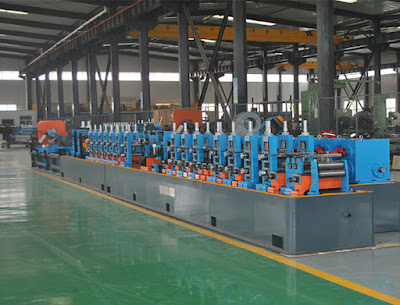Induction Welding Machine: Advancing Joining Technology
In the realm of modern manufacturing and construction, precision and efficiency are paramount. The induction welding machine stands as a prime example of technology that has revolutionized the process of joining materials. This advanced method, rooted in electromagnetic principles, has paved the way for enhanced productivity and quality across various industries.
Understanding Induction Welding:
Induction welding is a technique that utilizes electromagnetic induction to generate heat in a localized area of a workpiece. This controlled heat then fuses the materials together, creating a strong and seamless bond. This process relies on the phenomenon known as electromagnetic induction, where an alternating current flows through a coil, generating a magnetic field. This field induces currents, known as eddy currents, within conductive materials, causing them to heat up due to resistance.
The Components of an Induction Welding Machine:
Induction welding machines consist of several key components:
Power Supply: The power supply generates the alternating current needed to create the magnetic field. The frequency and power settings can be adjusted based on the materials being welded and the desired results.
Coil: The coil, often made of copper tubing, is responsible for generating the magnetic field. The workpiece is placed within or near the coil to induce the eddy currents.
Workpiece: The workpiece, made from conductive materials such as metals, absorbs the heat generated by the eddy currents and fuses together.
Cooling System: Since induction welding generates heat, a cooling system is crucial to prevent overheating and ensure the machine's longevity.
Control System: The control system allows operators to adjust the power settings, frequency, and other parameters to achieve the desired welding results.
Applications of Induction Welding:
Induction welding finds applications across various industries due to its efficiency and precision:
Automotive Industry: Induction welding is used to join various automotive components, including exhaust pipes, drive shafts, and other critical parts.
Aerospace Industry: This technology is utilized to weld components in the aerospace sector, ensuring the strength and integrity of critical parts.
Pipe Welding: Induction welding is employed for joining pipes in industries such as oil and gas, plumbing, and HVAC systems.
Electronics Manufacturing: Induction welding is used to assemble components in electronics manufacturing, creating reliable connections.
Medical Devices: The precision of induction welding is vital for creating medical devices, ensuring high-quality and sterile connections.
Cookware Manufacturing: Induction welding is employed to join handles to cookware items, ensuring durability and safety.
Renewable Energy: This technique is used to join components in renewable energy systems, such as solar panels and wind turbines.
Advantages of Induction Welding:
Precision: Induction welding offers precise control over heat input, resulting in consistent and uniform welds.
Speed: The rapid heating and cooling process of induction welding leads to shorter cycle times and increased production rates.
Efficiency: Induction welding is highly efficient, as the heat is generated directly within the workpiece, minimizing energy waste.
Quality: The localized heating reduces the risk of distortion and material degradation, leading to high-quality, strong welds.
Versatility: Induction welding can be used with a wide range of materials and geometries, making it suitable for diverse applications.
Automation: Induction welding can be easily integrated into automated production lines, further enhancing efficiency.
Clean Process: Induction welding is a clean process that does not require additional materials such as filler metals or flux.
In conclusion, the induction welding machine is a technological marvel that has transformed the way materials are joined across industries. Its precision, speed, and efficiency make it an indispensable tool for modern manufacturing and construction processes. As technology continues to advance, induction welding is expected to play an even more pivotal role in shaping the future of various industries.


评论
发表评论